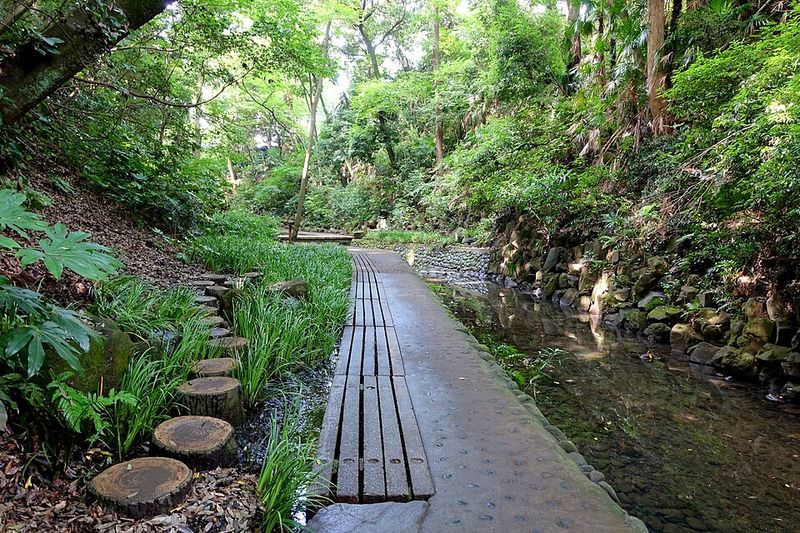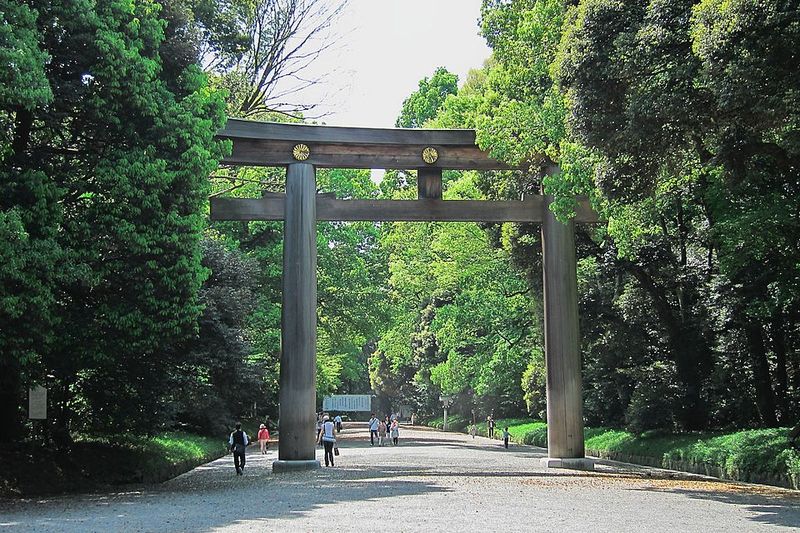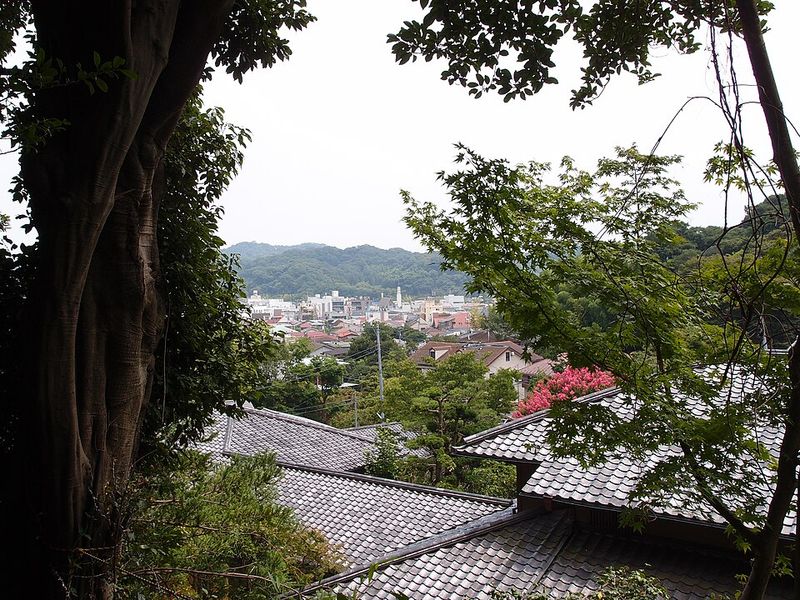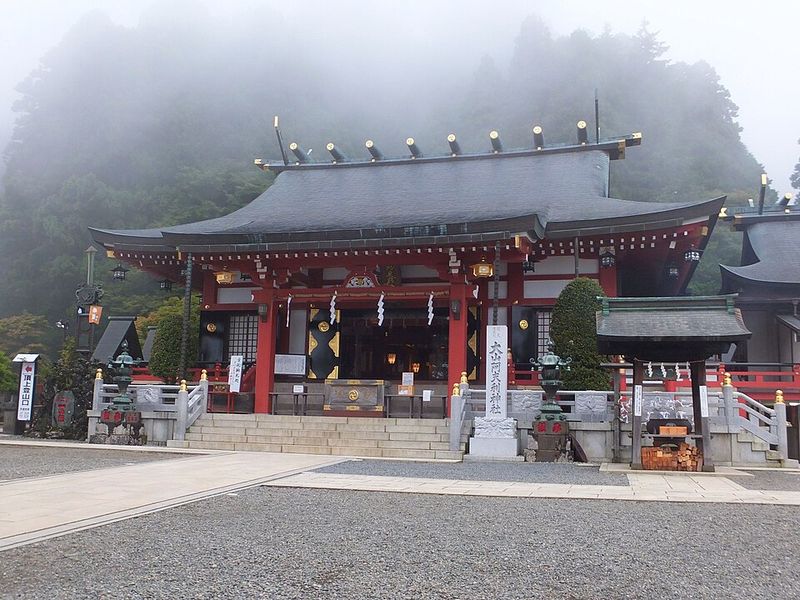Rush-hour trains and neon nights define the Tokyo–Hakone corridor, yet just off the tracks lie hushed groves where wind and water speak louder than traffic. These forested parks offer mossy trails, cedar canopies, and shrine-dotted paths that reset your senses in an hour or an afternoon. Whether you’re day-tripping before hot springs or detouring from a museum crawl, each stop promises restorative stillness. Pack light, unplug, and discover how close serenity is to Japan’s busiest routes.
Todoroki Valley (Setagaya)

Slip beneath Tokyo’s surface noise into Todoroki Valley, a green ravine threading along the Yazawa River. Boardwalks hug the water as bamboo fronds flicker in the breeze, and a vermilion bridge punctuates the greens. Stone lanterns guide you toward Todoroki Fudoson, where incense drifts over moss. The trail is short yet restorative, ideal between meetings or museums. Expect playful kingfishers and families enjoying shaved ice in summer. Come early for quiet footsteps and dew-dark rocks. Even after rains, the valley remains passable. Its compact serenity proves urban nature can still hush a racing mind.
Meiji Jingu’s Inner Forest (Shibuya)

Steps from Harajuku’s buzz, Meiji Jingu’s Inner Forest envelopes you in a century-old experiment in rewilding. Planted to mature naturally, its canopy now breathes with mature camphor, cypress, and evergreen oaks. Gravel crunches beneath slow strides toward imposing torii gates and hushed votive walls. Arrive at opening to hear thrush calls echo between trunks. The forest’s breadth diffuses crowds, offering pockets of calm even on weekends. Watch sunshafts slice through mist after rain. It’s less a park than a living temple buffer, absorbing city clamor and releasing it as measured, meditative quiet.
Institute for Nature Study (Shirokanedai)

Part research sanctuary, part time capsule, this reserve protects wetlands, coppices, and meadow patches in the heart of the city. Boardwalks meander past reeds alive with dragonflies, while side paths reveal fungi staircasing old logs. Signage explains succession and bird habitats without breaking the spell. Visitor numbers are capped, preserving the hushed mood. Spring brings warblers and fresh greens; autumn glows with copper leaves. Benches invite slow observation, not picnics. It’s a place to practice patient seeing, trading rush for rustle. Expect a modest entrance fee and seasonal closures; check times before you go.
Okurayama Park (Yokohama)

North of Yokohama’s center, Okurayama Park blends neighborhood calm with wooded knolls and open lawns. Climb gentle slopes beneath zelkova and cherry canopies to catch a sliver of skyline through leaves. In spring, petals drift like slow snow; in summer, cicadas score the shade. Wayfinding is simple, making it a stress-free detour between trains. Benches and slow curves invite lingering conversations or solitary reading. It’s not dramatic wilderness, but its sincerity restores. Stop by the nearby cultural center for a quick exhibit, then loop back through the trees as the light turns amber.
Sengenyama Park (Kamakura)

Kamakura’s temple trails get the press, but Sengenyama offers quieter ridgelines threaded with bamboo and oak. The path rises quickly, then relaxes into woodland hum, rewarding you with peeks toward Sagami Bay on clear days. Waypoints whisper history through worn stone markers and shrine stiles. Birds flit across sunlit gaps as breezes comb the leaves. Trails can be rooty and slick after rain; wear grippy shoes. Combine with a temple visit or bakery stop in town. The park’s understated vistas feel earned, a gentle antidote to station throngs and souvenir lanes.
Tanzawa-Oyama Quasi-National Park (Hadano gateway)

Closer than you think from Odawara trains, Tanzawa-Oyama delivers true mountain atmosphere without committing to a full expedition. Cedar-flanked stairways lead to Oyama Afuri Shrine, where clouds snag on ridges and bells ring softly. Choose an easy cable car assist, then wander forested paths to overlooks that hint at Sagami’s lakes. Weekdays feel particularly contemplative. Expect cooler temperatures, quick weather shifts, and satisfying noodle shops below. Waterfalls murmur along side trails, moss painting stones vivid green. It’s a bracing palate cleanser before Hakone’s onsens, swapping steam for mist and incense for cedar resin.
Hakone Gora Park Woodlands (upper paths)

Above Gora’s manicured lawns, discreet woodland paths branch into quiet pockets scented by hydrangea and pine. Stone steps climb to teahouse perches where steam wisps drift from valley onsens. Though compact, the shaded loops offer mindful minutes between ropeway rides and museum visits. Birds annotate the calm while views open to volcanic contours. Early morning or late afternoon gives you gentler light and fewer voices. Bring a warm layer; mountain breezes surprise. Pair this stroll with a soak afterwards, letting forest calm dissolve into mineral warmth—an elegant close to a day in motion.

